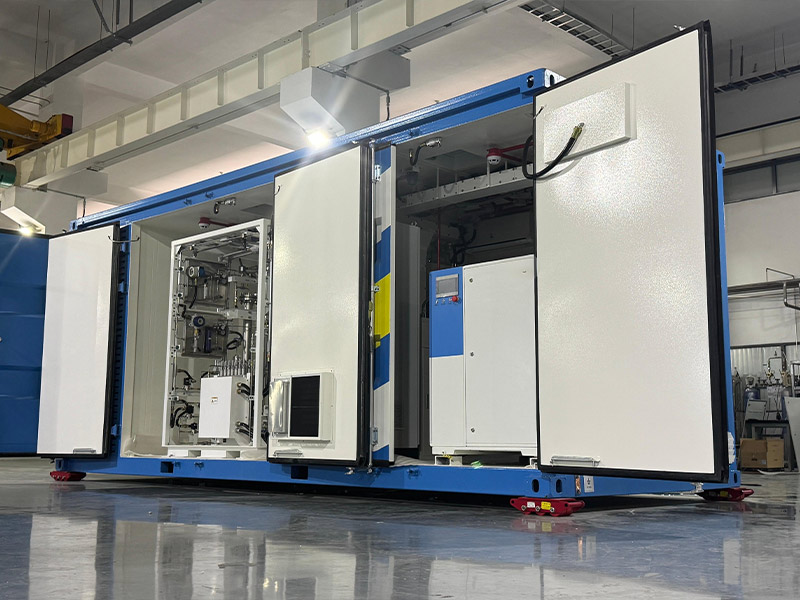Climate change is an urgent and growing threat to our planet, and finding solutions that can mitigate its devastating impacts is critical. As global temperatures rise, energy systems worldwide are being scrutinized for their carbon emissions and environmental footprints. Among the many energy solutions being explored, solar hydrogen has emerged as a potentially groundbreaking technology.
By harnessing the power of the sun to create clean, renewable hydrogen, this combination promises to address some of the world’s most pressing energy challenges. But, can solar hydrogen truly make a significant impact in combating climate change?
Keypoints
l Solar hydrogen offers a zero-emission energy solution by using solar-powered electrolysis to produce clean hydrogen fuel from water, with only water vapor as a byproduct.
l It addresses renewable energy's intermittency challenge by storing excess solar power as hydrogen for long-term use, ensuring reliable energy supply even during cloudy periods or at night.
l Solar hydrogen can decarbonize hard-to-electrify sectors like heavy industry, shipping, and aviation, where batteries and direct electrification fall short.
l Despite its potential, high production costs and energy conversion losses remain hurdles, though advancements in technology and infrastructure are expected to improve efficiency and affordability.
l While not a standalone solution, solar hydrogen is a critical component of a diversified clean energy strategy, complementing other renewables to accelerate the transition to a carbon-neutral future.
In this article, we’ll explore the concept of solar hydrogen, how it works, its role in the transition to a clean energy future, and whether it can help solve the climate crisis.

At its core, solar hydrogen refers to the process of producing hydrogen gas by using electricity generated from solar panels. This process is known as electrolysis, where electricity is used to split water (H₂O) into its component parts—hydrogen (H₂) and oxygen (O₂). Since solar panels provide clean, renewable energy, the hydrogen produced in this way is often called green hydrogen, as it’s created without any harmful carbon emissions.
Unlike fossil fuels, which release harmful greenhouse gases when burned, hydrogen can be used in fuel cells to generate electricity, with the only byproduct being water vapor. This makes hydrogen an incredibly attractive solution to decarbonize industries and power systems that are currently reliant on fossil fuels.
The impacts of climate change are largely driven by the emissions of carbon dioxide (CO₂) and other greenhouse gases from burning fossil fuels. The energy sector, which is responsible for a large portion of these emissions, must undergo a fundamental transformation to mitigate the worst effects of climate change.
Solar hydrogen could play a pivotal role in this transformation. Here’s how:
Solar hydrogen offers a powerful advantage over traditional fossil fuels. When hydrogen is used in fuel cells, it produces only water vapor and electricity, without releasing any carbon dioxide or pollutants into the atmosphere. This makes it an ideal solution for clean energy production.
While renewable energy sources like wind and solar power have made progress in electrifying the grid, some sectors—like heavy industry, long-distance transportation, and shipping—are difficult to electrify due to high energy requirements. Hydrogen fuel, particularly from solar energy, offers a clean alternative to fossil fuels for these sectors. Green hydrogen can replace fossil fuels in high-energy-demand applications, enabling industries to significantly cut their carbon emissions.
One of the main challenges with solar energy is that it is intermittent—meaning it doesn’t produce electricity when the sun isn’t shining. Solar hydrogen addresses this by acting as an energy storage medium. Surplus electricity generated by solar panels can be used to produce hydrogen, which can then be stored and used later for power generation or heating. This provides a reliable, long-term energy solution that can help stabilize the grid, especially in areas with high renewable energy penetration.
By generating solar hydrogen locally, regions can reduce their reliance on imported oil, natural gas, and coal. This can help enhance energy security and reduce the environmental impact of fossil fuel extraction and transportation. Solar hydrogen is a clean, homegrown solution that can be produced sustainably and distributed across regions.
While solar and wind power have gained significant traction, solar hydrogen offers unique advantages over other energy solutions. Here’s why:
Storage and Transport: Unlike electricity, which can be difficult and expensive to store at large scales, hydrogen can be stored for months or even seasons. It can also be transported easily via pipelines or in liquid form, much like natural gas.
Scalability: Solar hydrogen can be produced in large quantities and scaled up rapidly to meet the growing demand for clean energy. As solar infrastructure becomes more widespread, hydrogen production will become even more cost-effective.
Energy Density: Hydrogen has a high energy density, which makes it an ideal solution for industries that require large amounts of energy, such as aviation and heavy transportation.
Despite its immense potential, solar hydrogen is not without its challenges. Let’s take a look at the main hurdles it faces:
Currently, solar hydrogen is more expensive than conventional fossil fuels and other renewable energy solutions due to the high costs of electrolysis technology and solar infrastructure. However, as technology improves and production scales up, costs are expected to come down significantly.
The process of converting electricity into hydrogen and back to electricity results in energy losses, which makes it less efficient than direct electrification. However, advances in electrolyzer technology and fuel cell efficiency are expected to improve performance.
The widespread adoption of solar hydrogen requires significant investment in infrastructure, including hydrogen production facilities, storage systems, and transportation networks. Governments and industries must collaborate to build this infrastructure to facilitate large-scale deployment.
Given its many advantages, solar hydrogen is one of the most promising tools in the fight against climate change. By providing a sustainable, clean, and scalable energy solution, solar hydrogen has the potential to decarbonize industries, reduce carbon emissions, and provide long-term energy storage.
However, it is important to recognize that solar hydrogen is not a silver bullet for all energy challenges. It is most effective when used as part of a diverse energy mix, alongside other renewable sources like wind, solar, and hydropower. With continued innovation, policy support, and global cooperation, solar hydrogen could play a crucial role in achieving a carbon-neutral future.
It replaces fossil fuels by producing clean energy from sunlight and water, emitting only water vapor when used.
Yes! Unlike batteries, it stores solar energy as hydrogen for months—perfect for cloudy days or seasonal use.
Hard-to-electrify sectors like shipping, aviation, and steel production, where batteries aren’t practical.
Currently yes, but costs are dropping as technology improves and production scales up.
Building infrastructure (like pipelines and storage) and improving energy efficiency in conversion.
No—it’s most effective when combined with wind, solar, and other renewables in a diverse energy mix.
With government support and investment, it could scale significantly within the next 10–15 years.
Yes, with proper handling. Modern systems include safety features like leak detectors and ventilation.


